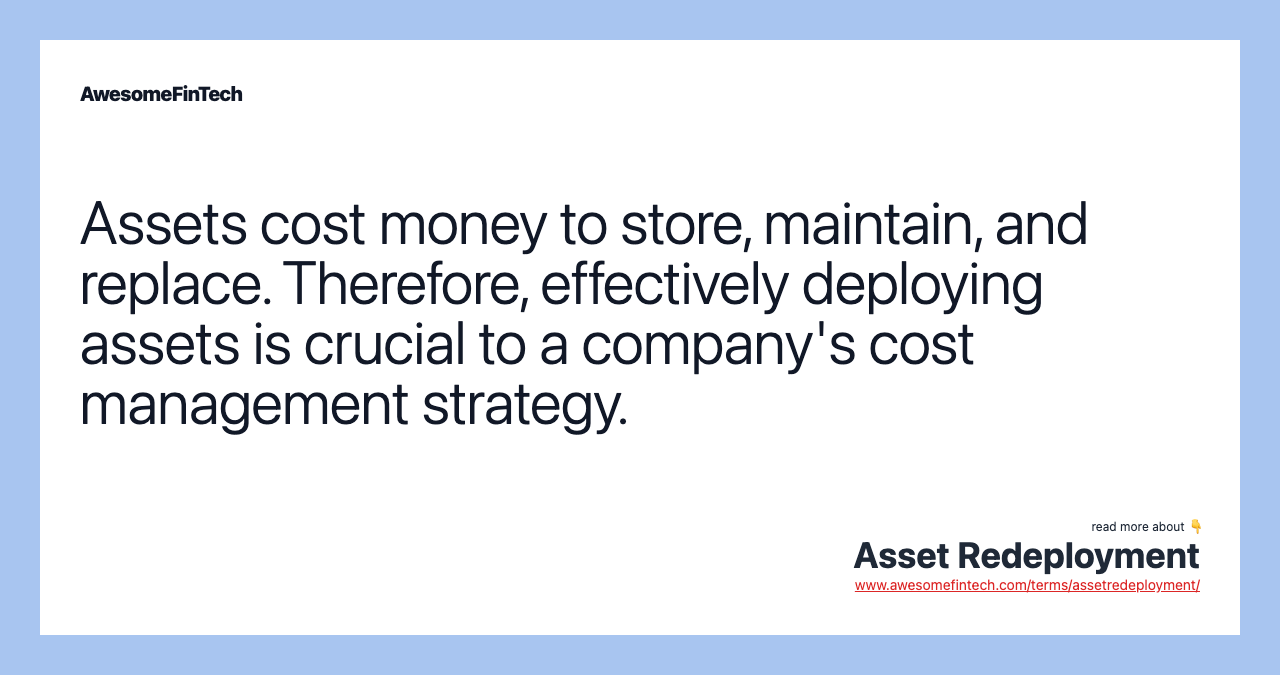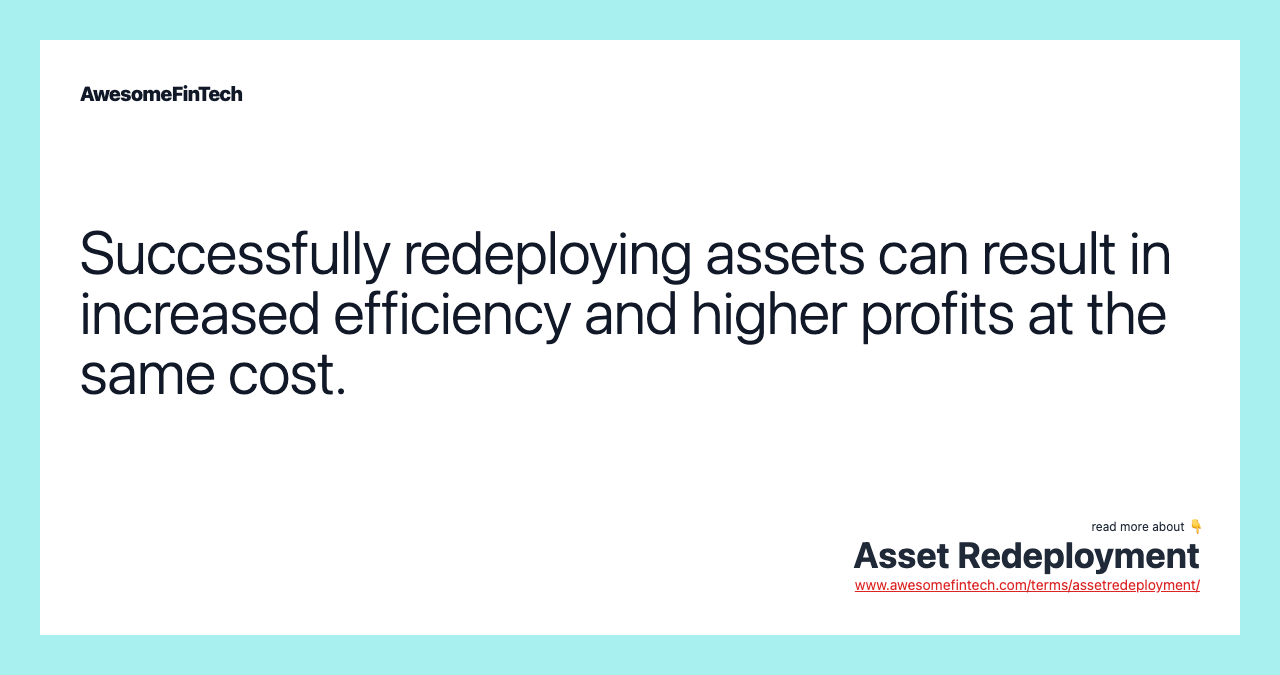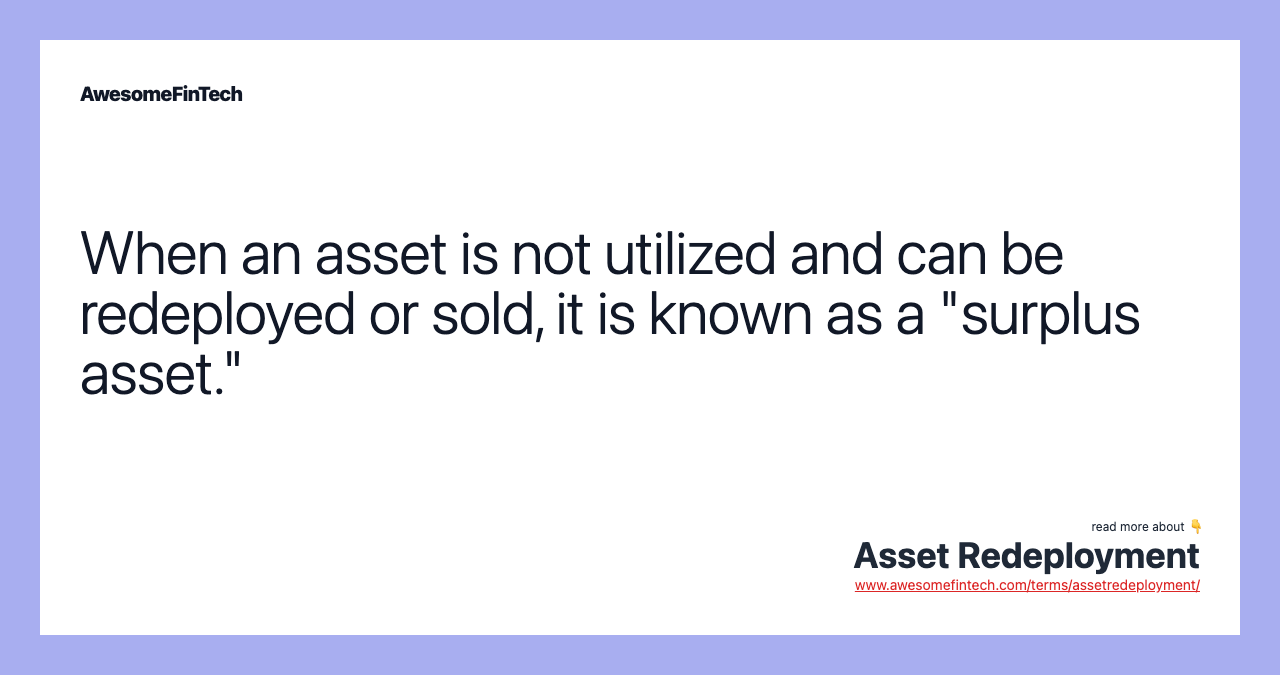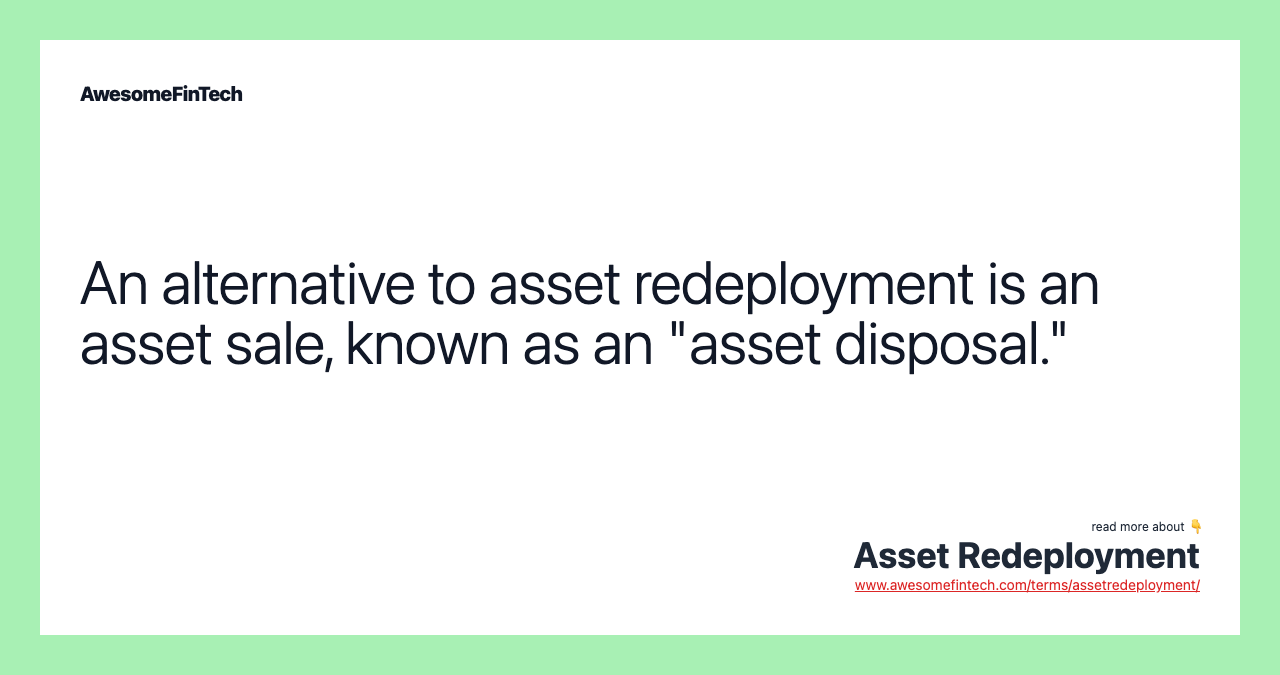Asset Redeployment
Asset redeployment is the strategic reallocation of assets from a less profitable use to a more profitable use. In 2014, General Electric (GE) sold its appliance business to Electrolux for $3.3 billion. The sale was part of the company's long-term redeployment of capital from non-core assets such as media, plastics, and insurance in favor of high-growth, higher-margin businesses such as oil and gas, power, aviation, and healthcare. An asset disposal impacts the balance sheet by recording the removal of an asset, marking depreciation, and noting the gain or loss from the sale. In the latter case, the asset would be sold at a loss or gain, and there would no future costs associated with that asset. Asset redeployment refers to the strategic reallocation of assets from a less profitable use to a higher profitable use.

What Is Asset Redeployment?
Asset redeployment is the strategic reallocation of assets from a less profitable use to a more profitable use. When companies redeploy assets, they take idle or underutilized capital and change how this capital is used in order to increase profitability. A proper asset redeployment strategy can allow a firm to achieve better results for the same cost.





Understanding Asset Redeployment
Though assets benefit companies, assets also cost money. These costs include storage, maintenance, and replacement. When assets are not efficiently utilized, they undermine profitability. When this occurs, it is beneficial for a company to review costs associated with its assets in order to determine whether they should be redeployed elsewhere.
Take for example a company that spends $5 million a year on upkeep for a widget making machine that generates $6 million in profits. The $1 million in profit margin can be good or bad, depending on whether the $5 million could be used more efficiently elsewhere.
If the $5 million is allocated to a "New and Improved" line of widgets that generates $7 million in profits, then the additional profit margins would make this a more lucrative option. In this example, the company would be better off retiring its widget making machine and redeploying capital to the new product line.
When the asset is a good — such as equipment or machinery — redeployment can be a money-saving alternative to buying a brand new replacement. In the example above, the widget making machine might be capable of producing the new product line, making it unnecessary to purchase a new one.
Asset Disposal
Another form of asset redeployment is an asset sale (called "asset disposal"). The proceeds from the sale increase the company's cash balance and remove the costs of maintaining the asset.
Asset disposal usually refers to the removal of a long-term asset that has been fully depreciated or is no longer useful. In the latter case, the asset would be sold at a loss or gain, and there would no future costs associated with that asset. Previously allocated funds could then be used elsewhere.
An asset disposal impacts the balance sheet by recording the removal of an asset, marking depreciation, and noting the gain or loss from the sale.
Assets that a company doesn't use at all and which need to be redeployed or sold are called "surplus assets."
Real World Example
In 2014, General Electric (GE) sold its appliance business to Electrolux for $3.3 billion. The sale was part of the company's long-term redeployment of capital from non-core assets such as media, plastics, and insurance in favor of high-growth, higher-margin businesses such as oil and gas, power, aviation, and healthcare. These moves enabled GE to generate 92.8% of revenue from its industrial business by 2016.
Furthermore, in 2020, GE sold its 125-year-old light-bulb business. The subsidiary had been performing poorly for years, so the company decided to sell and redeploy its assets, allowing for greater focus on industrial business.
Related terms:
Asset
An asset is a resource with economic value that an individual or corporation owns or controls with the expectation that it will provide a future benefit. read more
Berry Ratio
The Berry ratio measures a company's gross profit to operating expenses. Used in transfer pricing methods, this ratio is a financial indicator. read more
Capital : How It's Used & Main Types
Capital is a financial asset that usually comes with a cost. Here we discuss the four main types of capital: debt, equity, working, and trading. read more
Depreciation
Depreciation is an accounting method of allocating the cost of a tangible asset over its useful life and is used to account for declines in value over time. read more
Gross Profit
Gross profit is the profit a company makes after deducting the costs of making and selling its products, or the costs of providing its services. read more
Mergers and Acquisitions (M&A)
Mergers and acquisitions (M&A) refers to the consolidation of companies or assets through various types of financial transactions. read more
Operating Margin
The operating margin measures the profit a company makes on a dollar of sales after accounting for the direct costs involved in earning those revenues. read more
Opportunity Cost
Opportunity cost is the potential loss owed to a missed opportunity, often because option A is chosen over B, where the possible benefit from B is foregone in favor of A. read more
Profit Margin
Profit margin gauges the degree to which a company or a business activity makes money. It represents what percentage of sales has turned into profits. read more